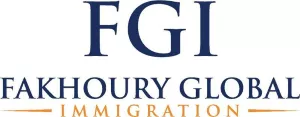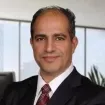U.S. Citizenship and Immigration Services (USCIS) announced on April 7, 2016, that it has received enough H-1B petitions to reach the statutory cap of 65,000 visas for fiscal year (FY) 2017. USCIS has also received more than the limit of 20,000 H-1B petitions filed under the advanced degree exemption, also known as the master's cap.
U.S. businesses use the H-1B program to employ foreign workers in occupations that require at least a bachelor's degree or equivalent.
Process for FY 2017: On April 12, 2016, USCIS announced that they received over 236,000 H-1B petitions during the filing period, which began April 1, including petitions filed for the advanced degree exemption. The number of petitions filed this year is 3,000 higher than the record breaking filings for FY 2016. On April 9, USCIS used a computer-generated random selection process, or lottery, to select enough petitions to meet the 65,000 general-category cap and the 20,000 cap under the advanced degree exemption. USCIS will reject and return all unselected petitions with their filing fees, unless the petition is found to be a duplicate filing. The agency conducted the selection process for the advanced degree exemption first. All unselected advanced degree petitions then became part of the random selection process for the 65,000 limit.
Premium Processing: USCIS announced on March 16, 2016 that they will begin premium processing for H-1B cap cases no later than May 16, 2016. For H-1B petitions not subject to the cap and for any other visa classification, the 15-day processing period for premium processing service begins on the date USCIS receives the request.
Cap Exempt Petitions: USCIS will continue to accept and process petitions that are otherwise exempt from the cap. Petitions filed on behalf of current H-1B workers who have been counted previously against the cap will also not be counted towards the congressionally mandated FY 2017 H-1B cap. USCIS will continue to accept and process petitions filed to:
- Extend the amount of time a current H-1B worker may remain in the United States;
- Change the terms of employment for current H-1B workers;
- Allow current H-1B workers to change employers; and
- Allow current H-1B workers to work concurrently in a second H-1B position. U.S. businesses use the H-1B program to employ foreign workers in occupations that require highly specialized knowledge in fields such as science, engineering, and computer programming.
The USCIS announcement about the H-1B cap being reached is available at https://www.uscis.gov/news/news-releases/uscis-reaches-fy-2017-h-1b-cap. For more information, see https://www.uscis.gov/working-united-states/temporary-workers/h-1b-specialty-occupations-and-fashion-models/h-1b-fiscal-year-fy-2017-cap-season. The USCIS announcement about premium processing is available at https://www.uscis.gov/news/news-releases/uscis-will-accept-h-1b-petitions-fiscal-year-2017-beginning-april-1-2016?platform=hootsuite.
The content of this article is intended to provide a general guide to the subject matter. Specialist advice should be sought about your specific circumstances.

